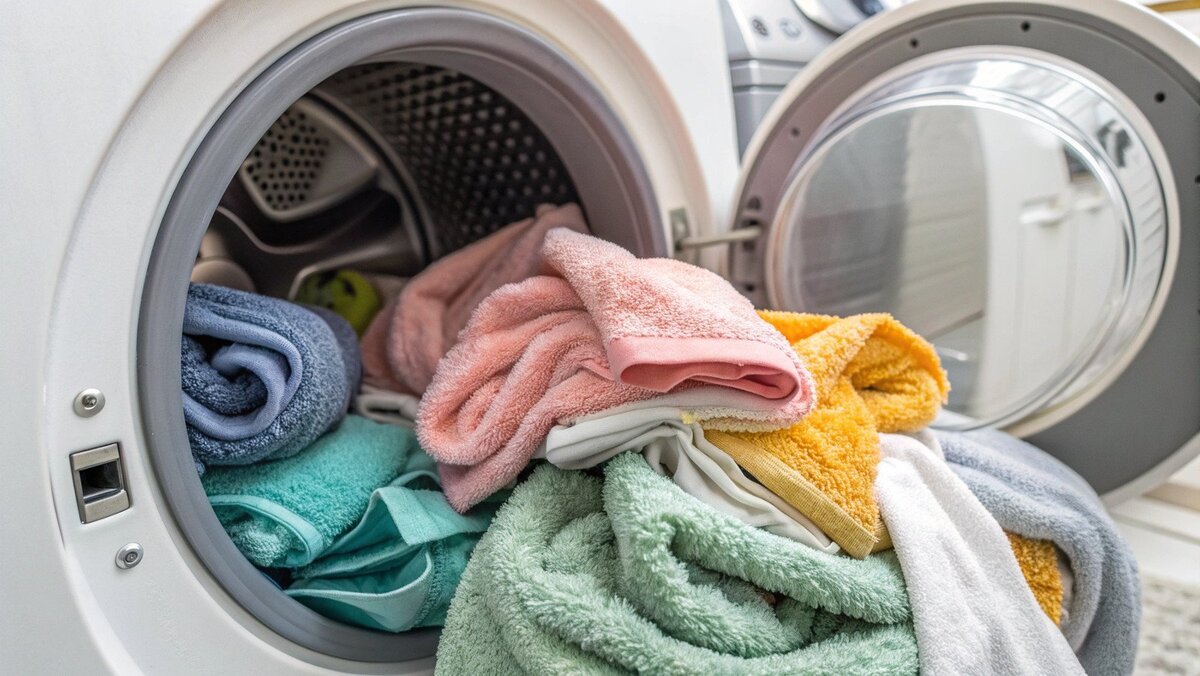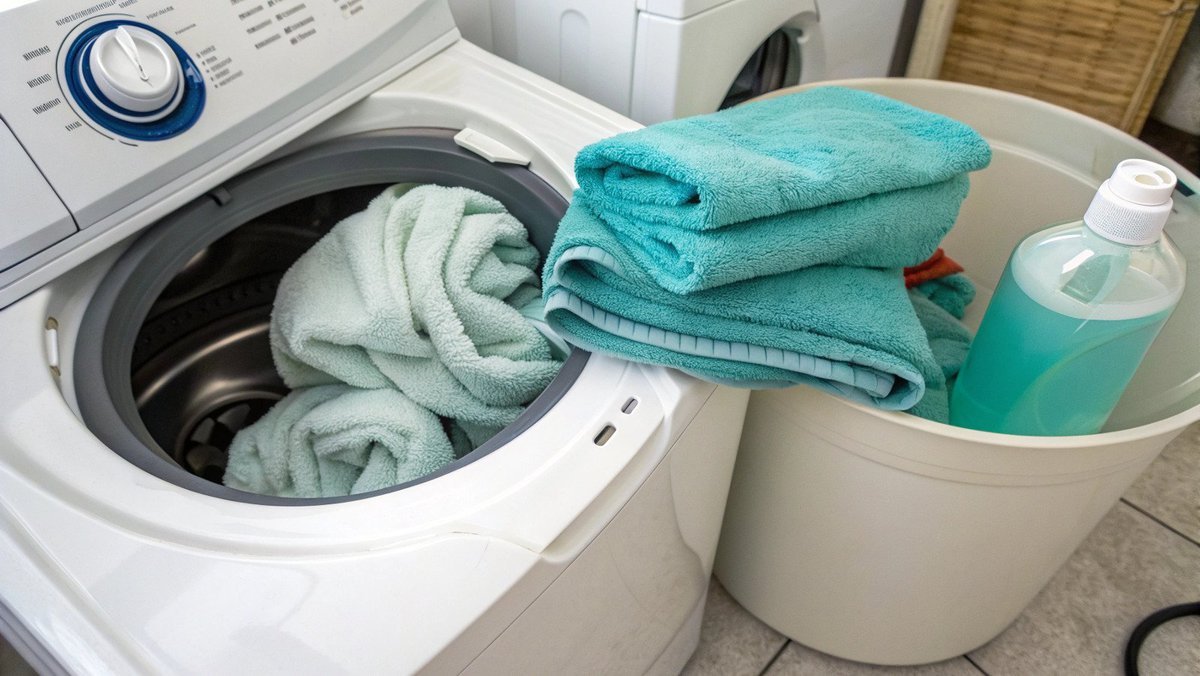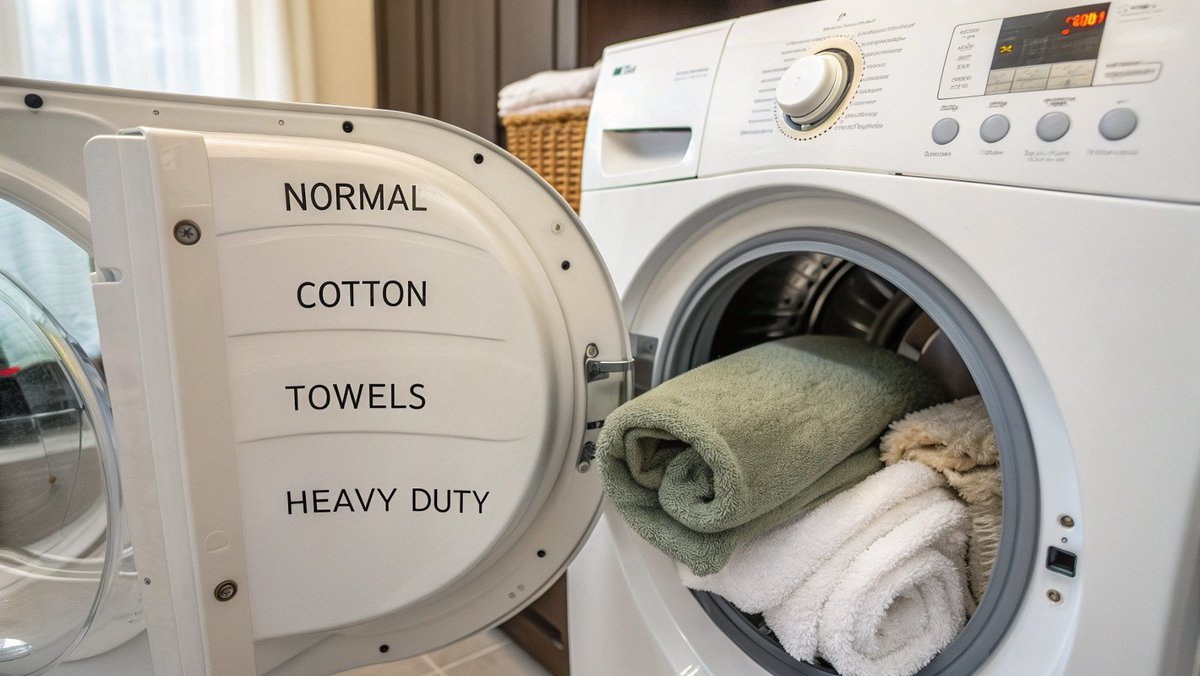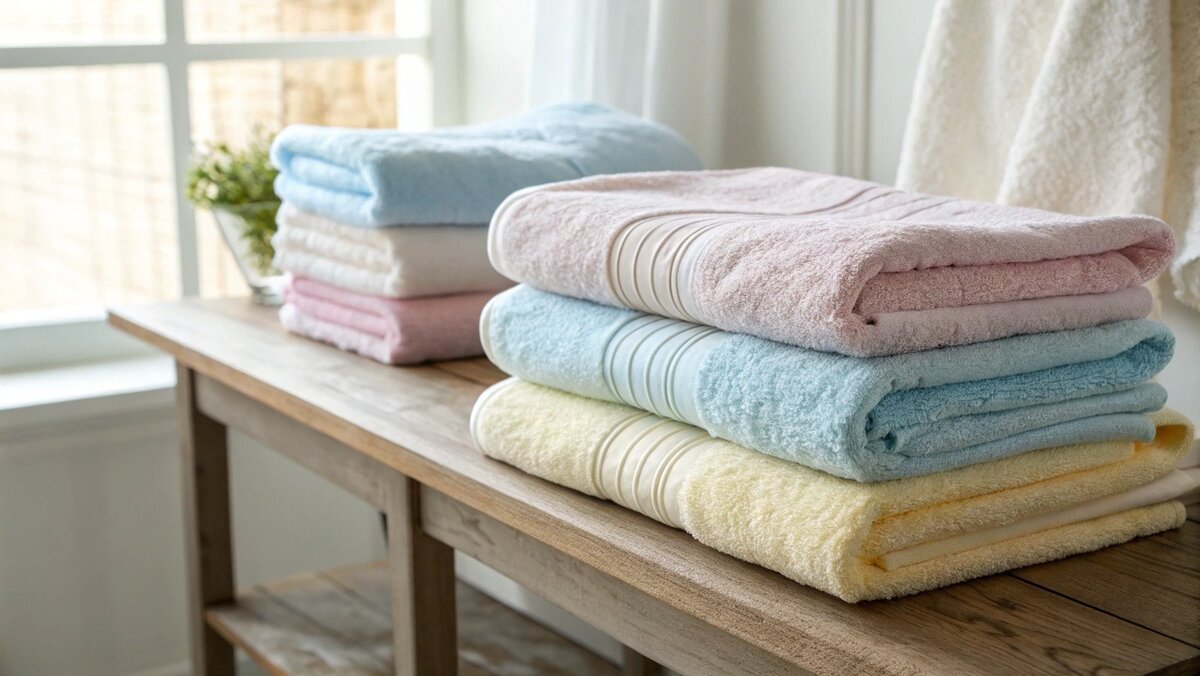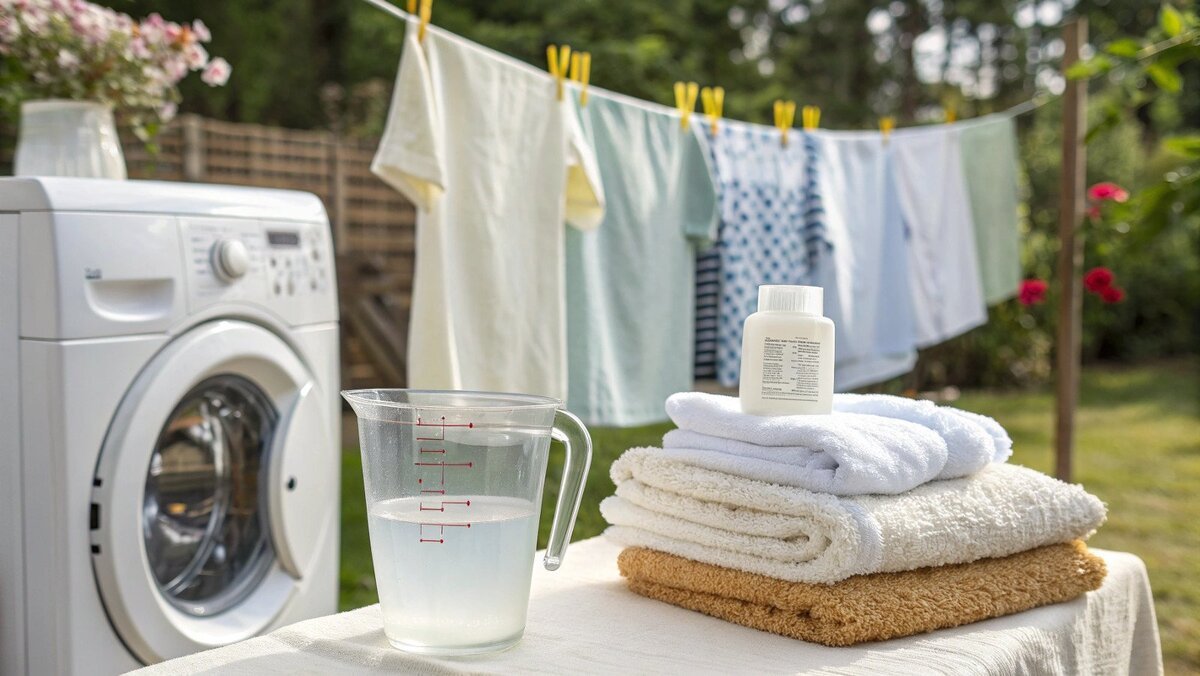Your new towels feel great, but now they’re stiff and scratchy. You worry you’ve wasted money on towels that won’t last. The right washing method revives softness and protects them.
To wash towels properly, use a regular or dedicated "Towels" cycle with warm water and half the usual detergent. Wash them separately from other clothing, avoid fabric softeners, and do not overload the machine. This simple routine cleans effectively while keeping towels soft, absorbent, and durable.
Getting the basics right is a game-changer. As the Marketing Director for TowelTrend, I’ve spent years guiding clients, and I’ve seen how small washing mistakes can ruin even the highest quality cotton towels. But there’s more to it than just a single setting. The right process not only preserves that plush, day-one feel but also extends the life of your inventory, which is crucial for any business, from a boutique hotel to a bustling gym. Let’s break down the specific cycles, temperatures, and techniques. You’ll learn how to keep your towels feeling brand-new, wash after wash. This knowledge will protect your investment and keep your customers happy.
What is the best way to wash towels in the washing machine?
You follow the care label, but your towels still come out less than perfect. It’s frustrating to invest in quality goods that don’t last. A few key steps make all the difference.
The best way is to wash towels only with other towels of similar color. Use warm water, less detergent than recommended, and add a cup of white vinegar to the rinse cycle occasionally. This routine keeps them clean, soft, and highly absorbent.
Dive Deeper
After being in the towel manufacturing industry since 2004, I can tell you that a proper wash routine is as important as the quality of the cotton itself. I once worked with a new spa client who was convinced our towels were losing their softness. After a quick call, we discovered they were washing towels with staff uniforms and using way too much fabric softener. We corrected their process, and the problem vanished. The secret is in the details.
Why You Should Wash Towels Separately
Washing towels with other items, especially those with zippers or buttons, causes friction that can snag the delicate loops of the terry cloth. This leads to pulls and premature wear. Furthermore, towels are lint-shedders, and clothes are lint-grabbers. Washing them together means your dark clothes get covered in fuzz, and your towels pick up lint that’s not their own. Separating them preserves the integrity and appearance of both the towels and your other laundry. For our business clients, ensuring towel longevity is a direct impact on their bottom line.
The Role of Detergent and Vinegar
Most people use far too much detergent. The excess doesn’t rinse out properly and builds up on the cotton fibers, leaving them stiff and less absorbent. I always advise our clients to cut their detergent use in half. Then, every three or four washes, add a cup of vinagre branco to the rinse cycle. Vinegar is fantastic; it strips away the soapy residue and mineral deposits from hard water without harming the fibers. It also acts as a natural softener and helps kill odor-causing bacteria.
What is the best wash cycle for towels?
So many cycles to choose from on a modern machine, it is confusing. Picking the wrong one can damage towel fibers over time or fail to get them hygienically clean.
For most towels, the "Normal" or "Cotton" cycle is best. If your machine has a dedicated "Towels" or "Heavy Duty" cycle, that is even better. These cycles use more water and a high-speed spin to effectively clean and rinse the thick fabric.
Dive Deeper
Choosing the right cycle is about finding the balance between a thorough clean and being gentle on the towel’s construction. At TowelTrend, we design our towels with durable, long-staple cotton fibers that can handle a robust wash. This is essential for our clients in hospitality and fitness who need hygiene and longevity. A weak cycle won’t properly clean a thick towel, while an overly aggressive one can cause unnecessary wear. The "Towels" or "Heavy Duty" cycle is engineered for this exact purpose. It typically adjusts water levels for the high absorbency of the load and uses spin patterns designed to handle a bulky, heavy load without the machine going off balance. Here is a simple breakdown to help you choose:
| Wash Cycle | Melhor para | Why It Works or Doesn’t |
|---|---|---|
| Towels / Heavy Duty | All towels, especially thick bath sheets. | Designed for heavy, absorbent loads. Uses more water for better rinsing and a faster spin to extract more water. |
| Normal / Cotton | A great default for all towels. | Good balance of cleaning power and fabric care. The duration and agitation are perfect for cotton fibers. |
| Quick Wash | Not recommended for towels. | These cycles use less water and time. They won’t penetrate thick terry cloth to remove body oils and bacteria. |
| Delicados | Not recommended for towels. | The low agitation and slow spin are not enough to clean towels effectively. It will leave them soapy and damp. |
Think of the wash cycle as the foundation of your laundry routine. By selecting "Towels" or "Normal," you’re setting the stage for a successful wash that gets towels clean and helps them last.
Do I wash towels on hot or cold?
Hot water might shrink items, and cold water might not clean well. It’s a common dilemma that can affect the color and lifespan of your towels. The right temperature actually depends on the towel.
Use warm water (around 40°C / 100°F) for colored towels to balance cleaning power and color preservation. Use hot water (60°C / 140°F) for white towels or to sanitize gym and sick-room towels. Cold water is less effective at removing oils.
Dive Deeper
As a manufacturer, we deal with colorfastness and shrinkage testing every day. This gives me a clear perspective on the temperature debate. The choice is a trade-off between sanitization, color preservation, and energy use.
When to Use Hot Water
Hot water is the champion of hygiene. It is excellent at killing germs and dust mites, which is why many of our clients in the hotel and healthcare sectors are required to use it. It is also the most effective at breaking down and removing body oils and heavy grime. For home use, I recommend a hot wash for all your white towels, kitchen towels, and any towels used by someone who has been ill. A key point: 100% cotton towels will experience minor shrinkage on the first hot wash—this is normal. We account for this during manufacturing.
The Benefits of Warm Water
Warm water is the perfect everyday setting. It provides excellent cleaning power for moderately soiled towels without being as harsh on colors as hot water. It also consumes less energy. For most colored bath towels, warm water is the ideal choice. It effectively removes dirt and oils while minimizing the risk of fading. At TowelTrend, we use high-quality vat dyeing processes, so our toalhas coloridas hold up very well even in warm water, ensuring our clients receive a product that looks great for a long time.
The Case for Cold Water
Cold water washing is best for energy conservation and is the gentlest on dark or brightly colored towels. However, it’s not very effective at removing oily residues. If you prefer to use cold water, it’s best for towels that are only lightly used. You might also want to use a detergent specifically formulated for cold-water washing to boost its cleaning power.
How do I keep towels soft and fluffy in a washing machine?
Your towels feel more like sandpaper than plush clouds. You’ve tried different products, but that initial fluffiness is gone. The secret is not in adding things, but in how you wash and dry.
To keep towels soft, use half the recommended detergent and skip fabric softener, which creates a waxy, water-resistant buildup. Instead, add one cup of white vinegar to the rinse cycle every few washes to strip away residue and naturally soften fibers.
Dive Deeper
The number one question I get from clients, whether they’re launching a small online brand or purchasing for a large hotel chain, is how to maintain that luxurious, fluffy feel. The answer always surprises them because it involves using less, not more. The enemies of softness are product buildup and improper drying.
The Problem with Fabric Softener
This is the biggest mistake people make. Fabric softeners work by coating fibers with a thin, lubricating film that feels slick. On toalhas, this film is water-repellent, which systematically destroys their primary function: absorbency. Over time, this buildup glues the cotton loops together, making the towel feel stiff, waxy, and flat. Dryer sheets do the same thing. To preserve the natural softness of the cotton we work so hard to source, you must stop using amaciante de roupas on your towels.
A Natural "Towel Reset"
If your towels are already stiff, you can revive them. First, wash the load of towels in warm or hot water with one cup of white vinegar—and no detergent. The vinegar will strip away all the built-up soap and softener residue. Then, run the load a second time with just half a cup of baking soda and no detergent. The baking soda helps neutralize odors and further softens the fibers. This one-two punch can bring even the most lifeless towels back to a much softer, more absorbent state.
The Importance of a Good Shake and Dry
Your routine outside the washer matters just as much. When you move towels from the washer to the dryer, give each one a good, hard shake. This helps to fluff up the terry loops before they are dried. Then, tumble dry on a medium heat setting. Don’t over-dry, as excessive heat damages the cotton fibers, making them brittle and scratchy. Use wool dryer balls instead of dryer sheets; they reduce drying time, prevent static, and help fluff the towels naturally.
Conclusão
Proper washing is simple. Using the right cycle, temperature, and less detergent protects your investment, ensuring your towels stay soft, absorbent, and luxurious for years to come.

